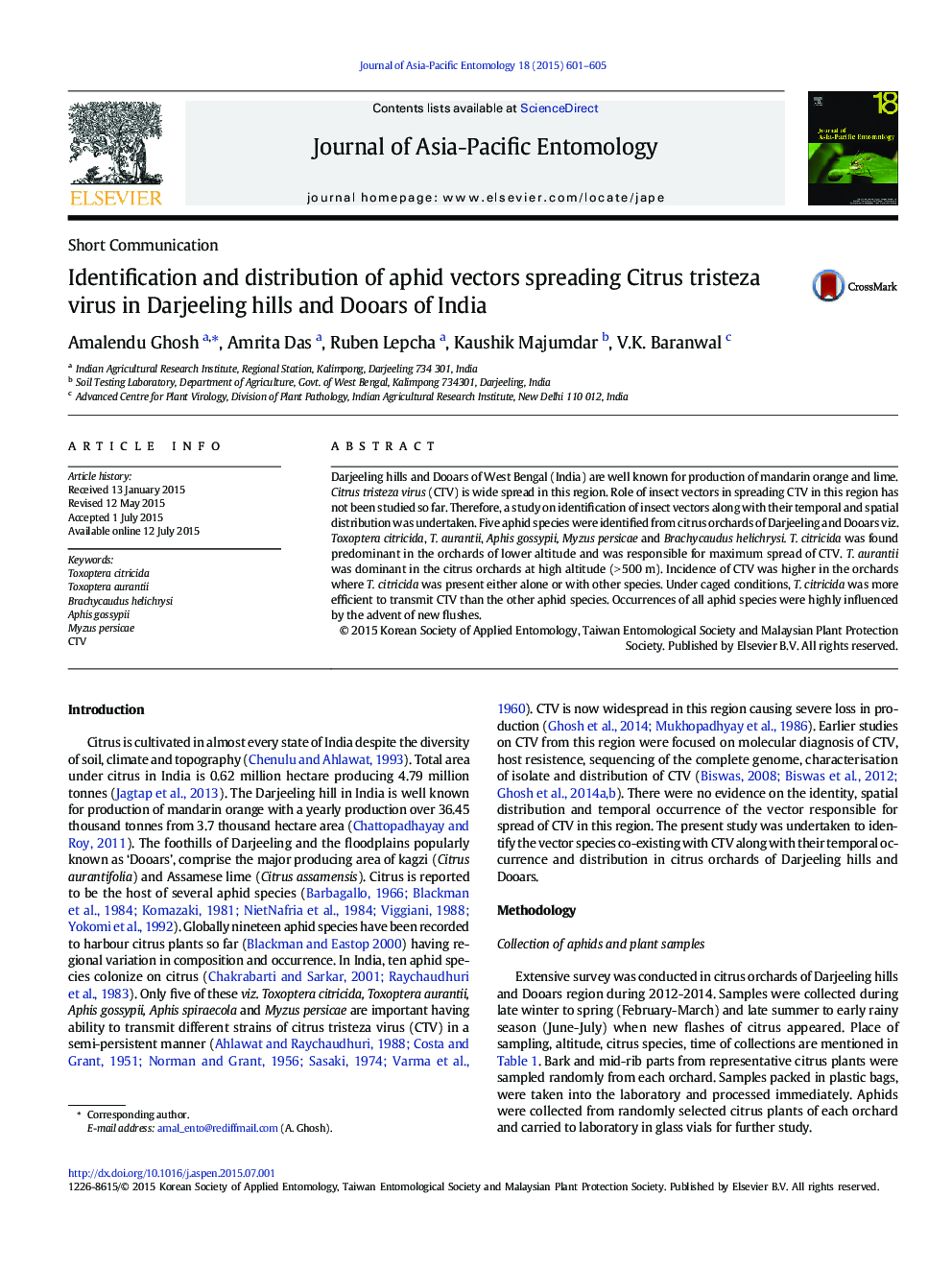| Article ID | Journal | Published Year | Pages | File Type |
|---|---|---|---|---|
| 4524657 | Journal of Asia-Pacific Entomology | 2015 | 5 Pages |
•Five aphid species associated with citrus hosts in Darjeeling hills and Dooars region.•T. aurantii is widely distributed in high altitude citrus orchards whereas, T. citricida is predominant in lower altitudes.•B. helichrysi is reported in citrus for first time from India.•T. citricida, T. aurantii, A. gossypii and M. persicae are responsible for spreading CTV in Darjeeling and Dooars region.•A bimodal trend in population dynamics has been observed for aphid species in citrus.
Darjeeling hills and Dooars of West Bengal (India) are well known for production of mandarin orange and lime. Citrus tristeza virus (CTV) is wide spread in this region. Role of insect vectors in spreading CTV in this region has not been studied so far. Therefore, a study on identification of insect vectors along with their temporal and spatial distribution was undertaken. Five aphid species were identified from citrus orchards of Darjeeling and Dooars viz. Toxoptera citricida, T. aurantii, Aphis gossypii, Myzus persicae and Brachycaudus helichrysi. T. citricida was found predominant in the orchards of lower altitude and was responsible for maximum spread of CTV. T. aurantii was dominant in the citrus orchards at high altitude (> 500 m). Incidence of CTV was higher in the orchards where T. citricida was present either alone or with other species. Under caged conditions, T. citricida was more efficient to transmit CTV than the other aphid species. Occurrences of all aphid species were highly influenced by the advent of new flushes.
Graphical abstractFive aphid species were recorded in citrus at Darjeeling and Dooars viz. Aphis gossypii (A); Brachycaudus helichrysii (B); Toxoptera aurantii (C); Toxoptera citricida (D) and Myzus persicae (E). Brachycaudus helichrysii. Brachycaudus helichrysii is reported for the first time in citrus from India. T. citricida is predominant in low altitude areas unlike T. aurantii abundant in high altitude areas above 500m. Under caged conditions, T. citricida was more potential to transmit CTV than the other aphid speciesFigure optionsDownload full-size imageDownload as PowerPoint slide
